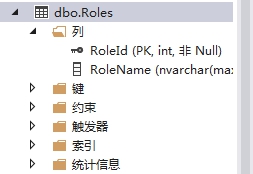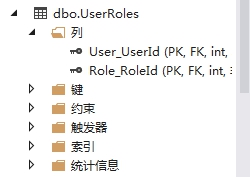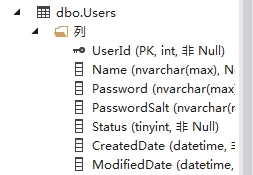如何用Entity Framework 6 连接Sqlite数据库
Posted
tags:
篇首语:本文由小常识网(cha138.com)小编为大家整理,主要介绍了如何用Entity Framework 6 连接Sqlite数据库相关的知识,希望对你有一定的参考价值。
参考技术A 注意这里面每个.net framework都有两个版本,一个带有bundle字眼,一个没有。一个安装的DLL里面包含SQLite.Interop.dll,而另一个没有。如果你运行代码的时候报“无法加载SQLite.Interop.dll”的错误,则将安装文件中的
SQLite.Interop.dll拷贝到Bin文件中即可。或是在NuGet下载的
packages\System.Data.SQLite.Core.1.0.94.0\build中也有对应的程序。
示例代码
Model.cs
public class Person
public Int64 Id get; set; //注意要用Int64
public string FirstName get; set;
public string LastName get; set;
public class MyContext : DbContext
public DbSet<Person> Persons get; set;
public MyContext()
: base("SqliteTest")
Program.cs
static void Main(string[] args)
MyContext context = new MyContext();
var empList = context.Persons.OrderBy(c => c.FirstName).ToList();
Console.WriteLine(empList.Count);
Person people = new Person()
FirstName = "Hello",
LastName = "World"
;
context.Persons.Add(people);
context.SaveChanges();
Console.ReadLine();
示例代码很简单,就是用EF对Person表进行新增与查看。
配置config文件
如果你是用NuGet获取Sqlite,会自动在config中配置一些相关的信息。
<?xml version="1.0" encoding="utf-8"?>
<configuration>
<configSections>
<!-- For more information on Entity Framework configuration, visit http://go.microsoft.com/fwlink/?LinkID=237468 -->
<section name="entityFramework" type="System.Data.Entity.Internal.ConfigFile.EntityFrameworkSection, EntityFramework, Version=6.0.0.0, Culture=neutral, PublicKeyToken=b77a5c561934e089" requirePermission="false" />
</configSections>
<connectionStrings>
<add name="SqliteTest" connectionString="data source=SqliteTest.db" providerName="System.Data.SQLite.EF6" />
</connectionStrings>
<startup>
<supportedRuntime version="v4.0" sku=".NETFramework,Version=v4.5" />
</startup>
<system.data>
<DbProviderFactories>
<add name="SQLite Data Provider" invariant="System.Data.SQLite" description=".NET Framework Data Provider for SQLite" type="System.Data.SQLite.SQLiteFactory, System.Data.SQLite" />
<remove invariant="System.Data.SQLite" />
<remove invariant="System.Data.SQLite.EF6" />
<add name="SQLite Data Provider (Entity Framework 6)" invariant="System.Data.SQLite.EF6" description=".NET Framework Data Provider for SQLite (Entity Framework 6)" type="System.Data.SQLite.EF6.SQLiteProviderFactory, System.Data.SQLite.EF6" />
</DbProviderFactories>
</system.data>
<entityFramework>
<defaultConnectionFactory type="System.Data.Entity.Infrastructure.LocalDbConnectionFactory, EntityFramework">
<parameters>
<parameter value="v11.0" />
</parameters>
</defaultConnectionFactory>
<providers>
<provider invariantName="System.Data.SqlClient" type="System.Data.Entity.SqlServer.SqlProviderServices, EntityFramework.SqlServer" />
<provider invariantName="System.Data.SQLite.EF6" type="System.Data.SQLite.EF6.SQLiteProviderServices, System.Data.SQLite.EF6" />
</providers>
</entityFramework>
</configuration>
其中数据连接串是:
<add name="SqliteTest" connectionString="data source=SqliteTest.db" providerName="System.Data.SQLite.EF6" />
注意提供程序集是System.Data.SQLite.EF6。
但是这个配仍然是错误的。
如果此时运行程序,会报错:
Unable to determine the provider name for
provider factory of type 'System.Data.SQLite.SQLiteFactory'. Make sure
that the ADO.NET provider is installed or registered in the application
config.
或中文错误信息:
未找到具有固定名称“System.Data.SQLite”的 ADO.NET 提供程序的实体框架提供程序。请确保在应用程序配置文件的“entityFramework”节中注册了该提供程序。
意思是EF没有找到提供System.Data.SQLite.SQLiteFactory的dll,我们看看现在config中的entityFramework节点:
<entityFramework>
<defaultConnectionFactory type="System.Data.Entity.Infrastructure.LocalDbConnectionFactory, EntityFramework">
<parameters>
<parameter value="v11.0" />
</parameters>
</defaultConnectionFactory>
<providers>
<provider invariantName="System.Data.SqlClient" type="System.Data.Entity.SqlServer.SqlProviderServices, EntityFramework.SqlServer" />
<provider invariantName="System.Data.SQLite.EF6" type="System.Data.SQLite.EF6.SQLiteProviderServices, System.Data.SQLite.EF6" />
</providers>
</entityFramework>
有System.Data.SQLite.EF6与
System.Data.SqlClient,确实没有名称为System.Data.SQLite的提供程序。这里我一直不明白为什么sqlite会去
找名称为System.Data.SQLite的提供程序,因为我们在连接串中配置的provider也是
System.Data.SQLite.EF6。
那我们就在EF的配置节点中增加一个名为System.Data.SQLite的provider,但type仍然是System.Data.SQLite.EF6。最终的配置如图:
红色部分是配置有变化的地方。
这里再运行程序就可以了。
注意:
1.连接串的配置。
数据连接串可以指定绝对地址,也可以指定相对地址。像我的data
source=SqliteTest.db,则SqliteTest.db要在Bin文件夹中,如果是web程序可以通过Data
Source=|DataDirectory|\SqliteTest.db来配置在App_Data文件平中。
2.如果没有指定数据库中的表文件名,EF生成的SQL表都是用复数表示。就像我的程序中实体名是Person,但EF去查找的表名会是People。所以在数据库中定义的表名是People。
3.不支持CodeFirst模式,您需要自己先设计好Sqlite的表结构。
Entity Framework Many to Many Relation Mapping(Entity Framework多对多关系映射)
通常我们在做数据库设计时都会有两张表是多对多关系的时候,在数据库做多对多关系时候我们通常通过中间关联表来处理,那我们现在在EF中是如何处理的呢?
假设我们有如下关系,用户(User)包含多个角色(Role),角色包含多个用户的情况下,我们如何用EF来处理这样的数据库设计呢?
接下来看如下代码清单:
首先看我们的User、Role实体
1 public class User 2 3 { 4 5 public User() {} 6 7 8 9 public int UserId { get; set; } 10 11 public string Name { get; set; } 12 13 public string Password { get; set; } 14 15 public string PasswordSalt { get; set; } 16 17 public Byte Status { get; set; } 18 19 public DateTime CreatedDate { get; set; } 20 21 public DateTime ModifiedDate { get; set; } 22 23 } 24 25 public class Role 26 27 { 28 29 public Role() {} 30 31 public int RoleId { get; set; } 32 33 public string RoleName { get; set; } 34 35 }
接下来,我们知道用户包含多个角色,那么在User实体中添加这样的代码
public virtual ICollection<Role> Roles { get; set; }
在User的构造函数中添加这样代码
this.Roles = new HashSet<Role>();
同样的,角色也包含多个用户,那么在Role实体中添加这样代码
public virtual ICollection<User> Users { get; set; }
在Role构造函数中添加这样代码
this.Users = new HashSet<User>();
接下来,构造我们继承自DbContext类的DataContext类
public class DataContext : DbContext
{
public DataContext()
: base("DataContext")
{
}
public DbSet<User> Users { get; set; }
public DbSet<Role> Roles { get; set; }
protected override void OnModelCreating(DbModelBuilder modelBuilder)
{
}
}
接着,我们生成我们项目,就可以看到我们生成的数据库关系了



可以看到我们中间的链接表生成的是User_UserId、Role_RoleId,但实际工作中我们可能不会这样定义或者希望可以更多定制化,接下来我们通过Fluent API(注:我这里直译为流畅的API声明,大家可以看字面意思理解,我不一定对)方式来进行数据声明,我们这里关系是一个用户可以包含多个角色,一个角色也可以包含多个用户,那我们在DataContext的OnModelCreating重载方法里这样写:
modelBuilder.Entity<User>()
.HasMany(r => r.Roles)
.WithMany(u => u.Users);
进一步我们指定中间链接表
modelBuilder.Entity<User>()
.HasMany(r => r.Roles)
.WithMany(u => u.Users)
.Map(ur =>
{
ur.MapLeftKey("UserId");
ur.MapRightKey("RoleId");
ur.ToTable("UserRoles");
});
参考资料:
http://www.cnblogs.com/panchunting/p/entity-framework-code-first-fluent-api-configuring-relationships.html
以上是关于如何用Entity Framework 6 连接Sqlite数据库的主要内容,如果未能解决你的问题,请参考以下文章
如何用Entity Framework 6 连接Sqlite
如何用Entity Framework 6 连接Sqlite数据
Entity Framework 6 的动态 MySQL 数据库连接
如何为 ASP.net Core 配置 Entity Framework 6
Entity Framework 6 Recipes 2nd Edition(10-9)译 -> 在多对多关系中为插入和删除使用存储过程